The aero engine side of Alvis was an important facet of its history, told in Roy Probert‘s book “Leonides”. Roy died on June 17th 2021 at the age of 86. His legacy is a detailed history of the Alvis company’s aero engine activities and his research into the early years of the Alvis company. Much of his accumulated documentation is now held in the Archive.
We now hold copies of the Leonides manual which are available in both hard copy and digital form for members of the trust. The contents are:
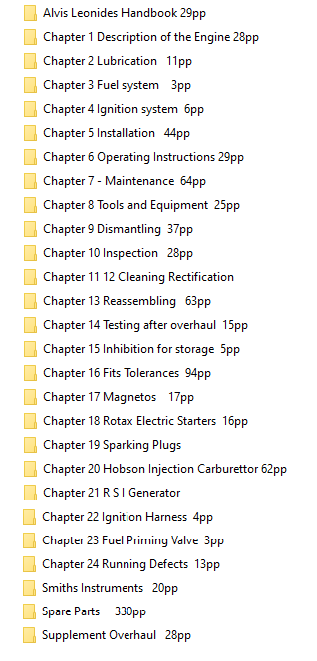
Roy was authorised by Alvis to provide service information for the Leonides aero engine in his retirement which responsbility has now been passed to John Boswell. John has a background in the servicing and operation of these engines in a supervisory capacity and also as an instructor on the engine type while serving in the Royal Air Force. He holds all the relevant technical data and all enquiries for information should be channelled to him via ASK A QUESTION
Roy was with Alvis for 27 years, becoming a Quality Engineering Manager. He was given the memorabilia of the late George Clarke, then Chief Engineer when he retired from Alvis. He has contributed the following….
ALVIS AND THE AERO ENGINE
The decision by Alvis in 1935 to enter the realm of aero engine manufacture was bold, considering that it had no experience in this field of engineering. The company were aware that there was a market opportunity for a British engine of greater power than those currently then available and reasoned that their ambitions would best be served by building under licence an existing foreign engine they could learn from and further develop to meet that need.
T G John had some background to doing this from his time at Siddeley’s in Coventry where he had previously held the position of Works Manager with a brief to improve the performance and reliability of a badly designed engine that would eventually emerge as the Puma. Alvis’s Chief Engineer, Captain Smith-Clarke, although having had close association with acceptance standards for aero engines during his time as a government inspector, was less enthusiastic at the idea having witnessed the pitfalls of meeting the increasing quality and performance requirements for an aero engine. However, they pressed ahead and entered into negotiations with a leading French engine producer, Society des Gnome et Rhone of Paris, and secured a contract that would give realisation to their ambitions.
Such was their enthusiasm and confidence in the venture that a modern new factory was built on land the company already owned adjacent to the existing car factory in Coventry. The new premises were of the most advanced design in the country at the time, in respect of facilitisation, providing a high degree of independence from subcontracting by incorporating most of the manufacturing process requirements under one roof. Complimenting a large engine development test bed acoustically designed in conjunction with The National Physical Laboratory, were machine shops where each machine was self-powered dispensing with the overhead pulley and belt drives that characterised production plants of that time. Incorporated also were a pattern shop and a foundry smelting steel, iron and aluminium. Metallurgical, physical and chemical laboratories, and x-ray cells. Electro-plating shops, a coppersmiths, furnace heat treatment department, functional testing rigs and a toolroom producing all the necessary jigs and fixtures. In fact everything to ensure controlled, quality production.
Recognising that they would need government support for the enterprise, T G John had earlier approached the ministry and gained tacit approval on the understanding that the engines Alvis were to produce would be given imperial sizing and accommodate British accessories as all others did, and Alvis gave assurances to this effect. However, the turn of events in the following months were to see government take a hostile stance towards Alvis’s intentions and refusal to buy engines of foreign origin. In retaliation to this the company intensified the design of its own, wholly British engine that in the months ahead was to emerge as Leonides. (1938).
With the approaching threat of war with Germany, Alvis were forced to shelve their interests in aero engine development and to assist the war effort, the new factory making a valuable contribution to the manufacture of numerous aircraft parts, plus other related activities.
Serious production of their 9-cylinder radial engine began in 1947, competing uncertainly at that time in the wake of the gas turbine against which its prospect for success was a gamble. But this modern and aesthetically pleasing engine found favour by its performance characteristics as an ideal power unit for certain post-war aircraft design applications, notably as suited to powering a new generation of rotary wing aircraft. In order to adapt the engine for the emerging helicopter designs, Alvis reconfigured the engine so it would operate lying on its back with the drive shaft uppermost. Unique but perfectly suited to the requirement.
The success of Leonides grew steadfastly throughout the 1950’s and its power was increased from the original engine figure of 450hp to reach 615hp, and eventually saw the arrival of a 14-cylinder version producing 750hp. But the tide of aircraft engineering progress was to herald the decline of the piston engine as a power unit for future aircraft by the end of the decade. Leonides had a production span of 18 years during which time it found notable application in a number of fixed wing and rotary wing aircraft an well as experimental design uses the most unique of which was as the power unit for the first hovercraft.
Alvis’s aero engine era was a chapter to be proud of in the history of this renowned company. A full and detailed account of the engine’s development and career is given in a book devoted to the subject. ‘Leonides’ – The Alvis Aero Engine by Roy Probert is published in hardback and obtainable from us, price £16.95 plus post and packing. Just leave a comment if you would like a copy.
Roy’s book makes a fascinating read and an insight into the efforts put into making the aero engine a commercial success after the war with John Parkes as MD. This photo is extracted from Reflections in Retirement published in the Bulletin compiled by Eric Stapleton:
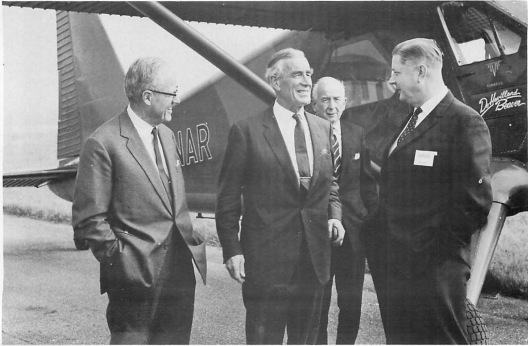
A capable performer, it was subsequently lent to Mr. Parkes on an indefinite basis as a mobile test bed. It was finally disposed of on the orders of Lord Stokes and found a home in Canada, where it was converted into a useful amphibian. It is pictured here on the occasion of the opening of the Champion Sparking Plug factory in Lancashire, De Havilland having their own factory in the neighbouring county of Cheshire. On the left of the group is Bill Martin-Hurst, Managing Director of Rover Limited, whilst A. B. Smith, Champion’s Production Director, appears in the photograph second from the right.
Alvis advertised their products widely and here are some examples, courtesy of Aviation Ancestry (and thanks to Dave Culshaw for the research):
The process of digitising the Leonides Manual has started and this Chapter 9 on Dismantling is now available to download.
This Review of Roy’s book was published by the VSCC in the Winter 2011 edition number 247.
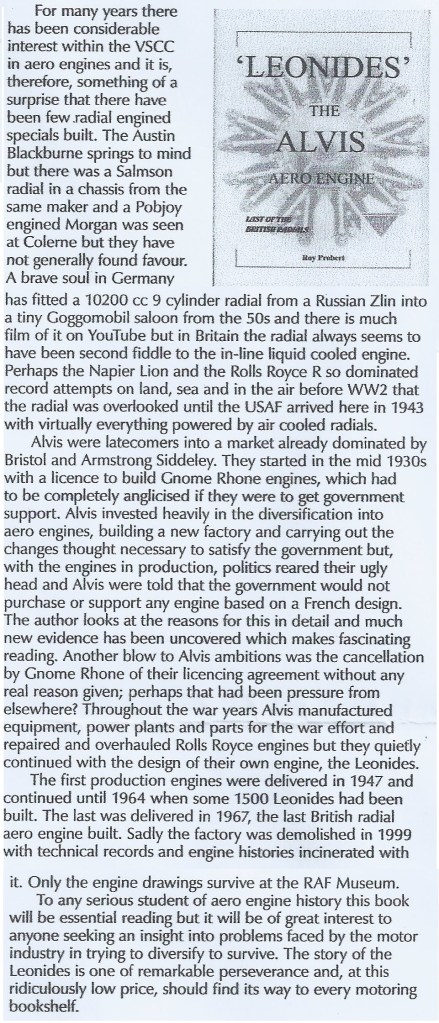



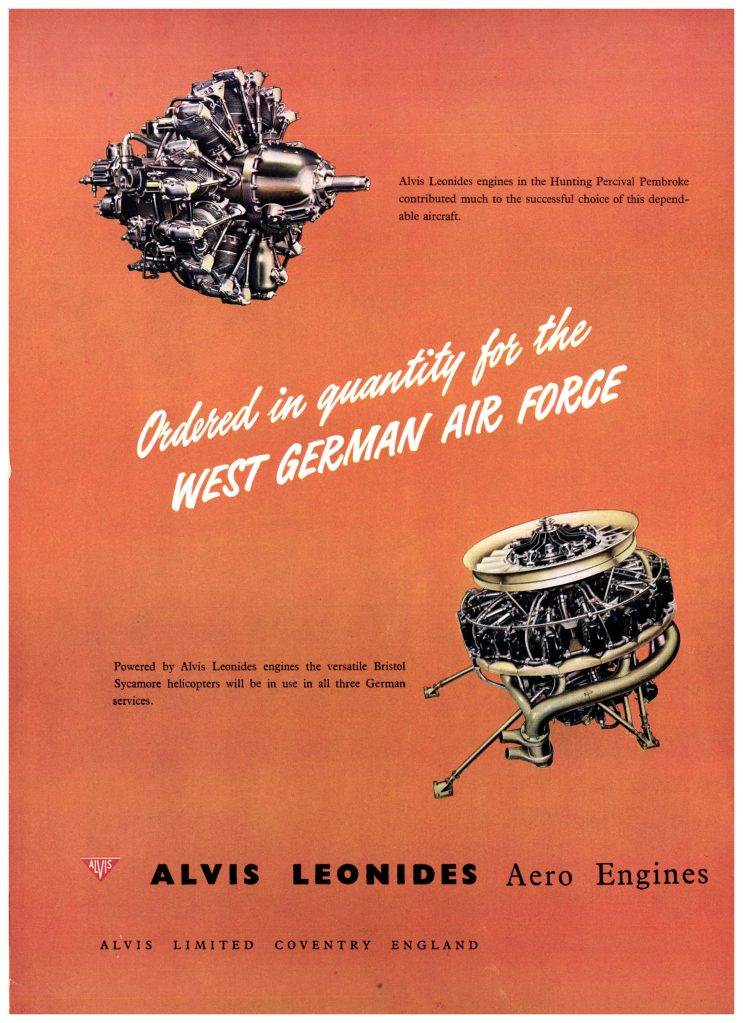


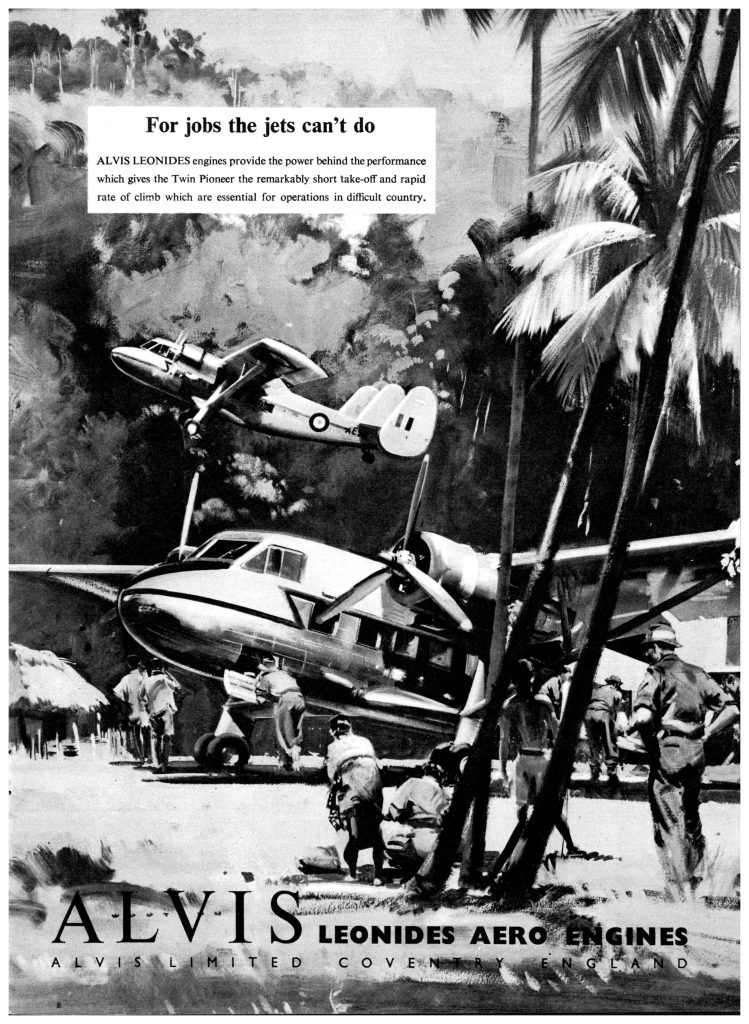
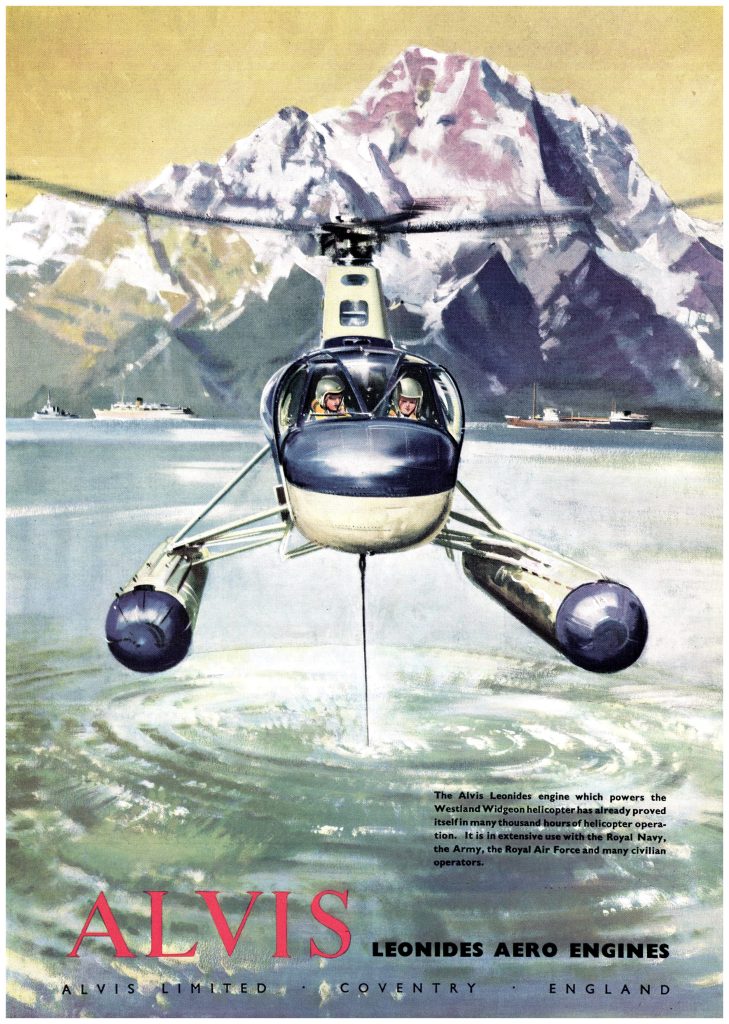
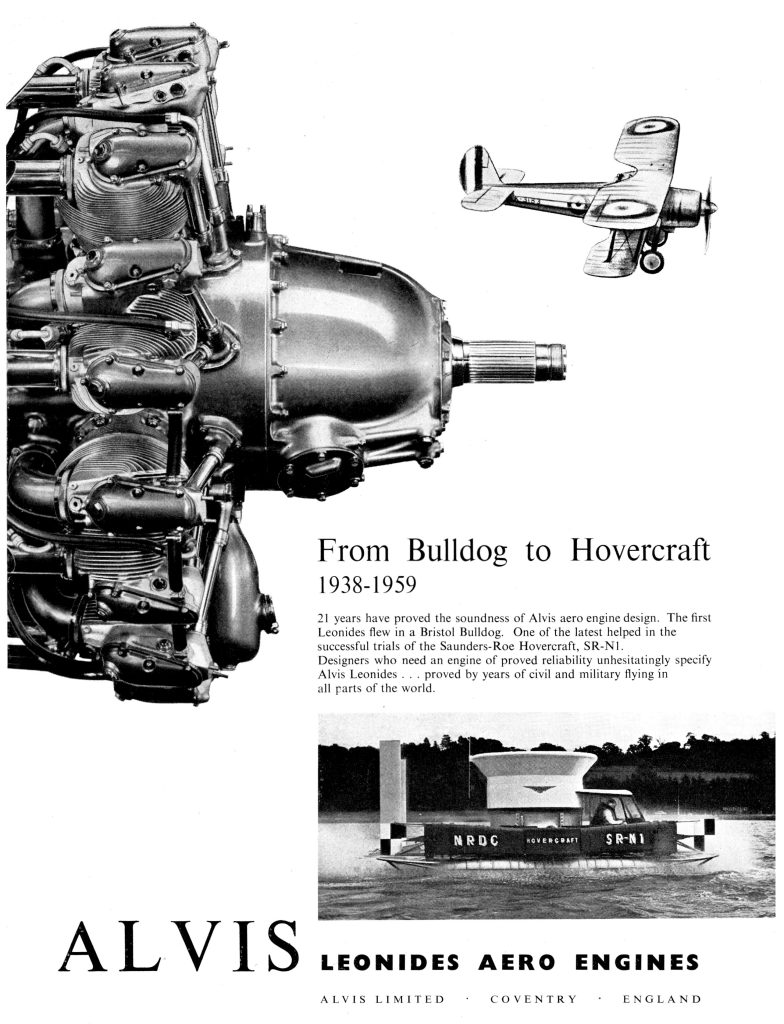



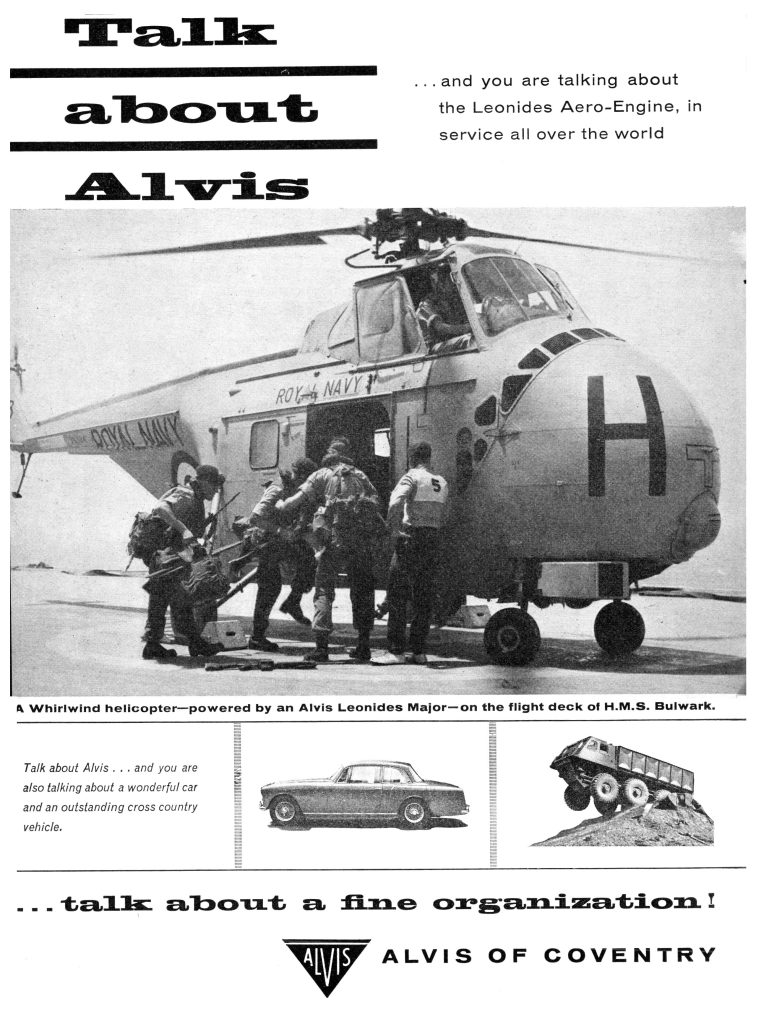

Can anyone tell me what happened to the engine drawings? Is it possible to obtain copies of same with a view to modelling?
Roy Probert says the engine drawings were all kept and placed in storage, but not catalogued. Whether their access or viewing is possible he is unsure but request for this would need to be made to the RAF holding authority. Roy holds the company appointment to provide technical support for all aero engine interests.
I’m about to visit Coventry (in June) as part of researching my family history. My grandfather, Harry Buller, worked at Alvis and is listed on the 1939 Register as a ‘Chief Planning Engineer – aircraft engine production’. I’m interested to find out what his job actually entailed. Can anyone help?
Cheers
Lee Welling
Roy Probert has replied to you direct.
HI
My father, Bill Lewis was an aero engine fitter in 1960 – 1970’s and there was a photo of him on the wall, at the Walsgrave site when they moved there. Was wondering if you happened to know what happened to those photos when Alvis moved out of the premises. Many thanks
Hello Glynis – I have made some enquiries about the picture of your father at Walsgrave, but no one recalls it or what happened to it. However, I and one of my ex-Alvis colleagues both have pictures with your father on from the days when we both worked with him. If any would be of interest to you I could always E-mail you with whatever so let me know.
Hi hope you are well and in good health
My father Haroon Kika has been looking for his old work colleagues and mentioned your name along with paul’s
If you do read this message anytime soon please can you get in contact, either by phone or emailmy father would really appreciate it
My number is
07534897738
Email is jabs34@hotmail.co.uk
I’m trying to obtain a photo of the Rover APU that was worked on at Baginton.in the late 1960’s. I came close to taking over from the Forman Inspector there at the time, having been put forward by Roy Propert and his colleague. Unfortunately Donald Stokes put the kibosh on that by stating no further orders will be taken and the existing contracts will not renewed . I was offered a job on the fighting vehicles at the next opportunity but I declined and returned to Rolls-Royce. It’s all in my book Roy, ‘Memories of a Coventrian’ in hardback in all the libraries in Coventry.
Good to see you’re still about Roy.
Best wishes, Roy Lawton
Thanks for the news of your book. Roy will respond to you direct.
Hello again, many thanks for the parts manual received via Dropbox.
How can i get a copy of “Leonides” – The Alvis Aero Engine by Roy Probert?
Hello Allan
We can arrange to post a copy to you. Please let me know your address and if you can pay by bank transfer (preferred), PayPal or cheque. John Fox, trustee.
Could you please advise if a copy of Roy Proberts book could be sent to me in Australia.
Thanks
Tom
We can post one to you. Please let us know your address and we can adivse the total cost – reply to alvisarchive@btinternet.com
Hello,
My interest is for the Alcides and Pelides models, rather than for the Leonides.
so, I would like to know to which extent the book on Leonides is informative on theses engine, especially on the efficiency of the changes introduced with respect to the French originals.
Is it some alternative source of information on this topic?
With my thanks
Pierre-Yves Hénin
Roy has replied to you direct.
Big thankyou to John who gave me Roy’s contact details, and Roy has been brilliant and just come back to me and confirmed my Leonides engine history, great to finally know it’s identification and what manuals and parts diagrams to focus on for my restoration.
Your engine is a Leonides Mk 126 (Provost aircraft type) and was routinely serviced by Alvis.
My recorded facts are as follows
Manufactured in June 1954
Last overhauled : September 1962
Despatched to 25 MU RAF Hartlebury (spares holding)
Total accumulative running time at last overhaul : 1620.35 Hrs.
Modifications incorporated : Up to 531
I would like to order a copy of the book for delivery to Australia; it is a fascinating ad rather overlooked story
I am an ex Alvis Ltd apprentice, and spent a considerable amount of time working at the Baginton Site, on both the Leonides and Lycoming engines, plus Rover Gas Turbines, I also had a couple of flights with Johnny Williams in the Leonides DH Beaver. I would like to purchase a copy of Roy Proberts book. I live in Canada, postal code L9T 4k5, maybe you could let me know the availability and total cost including shipping
Regards
Thank you. We hold the stocks of Roy’s books and will reply to you personally.
Hello is it possible to order a copy of “Leonides” – The Alvis Aero Engine by Roy Probert for delivery in the UK?
Yes, the price including postage and packaging is £20 which can pay on the Becoming A Friend page with 2 x £10 donations and a note to say Leonides with your postal address.
Dear Sirs,
I´d like to buy a copy of ‘Leonides’ – The Alvis Aero Engine by Roy Probert.
Is it possible to pay by paypal?
Kind regards,
Christian Jacoby
Yes, please confirm your address for postal charges.